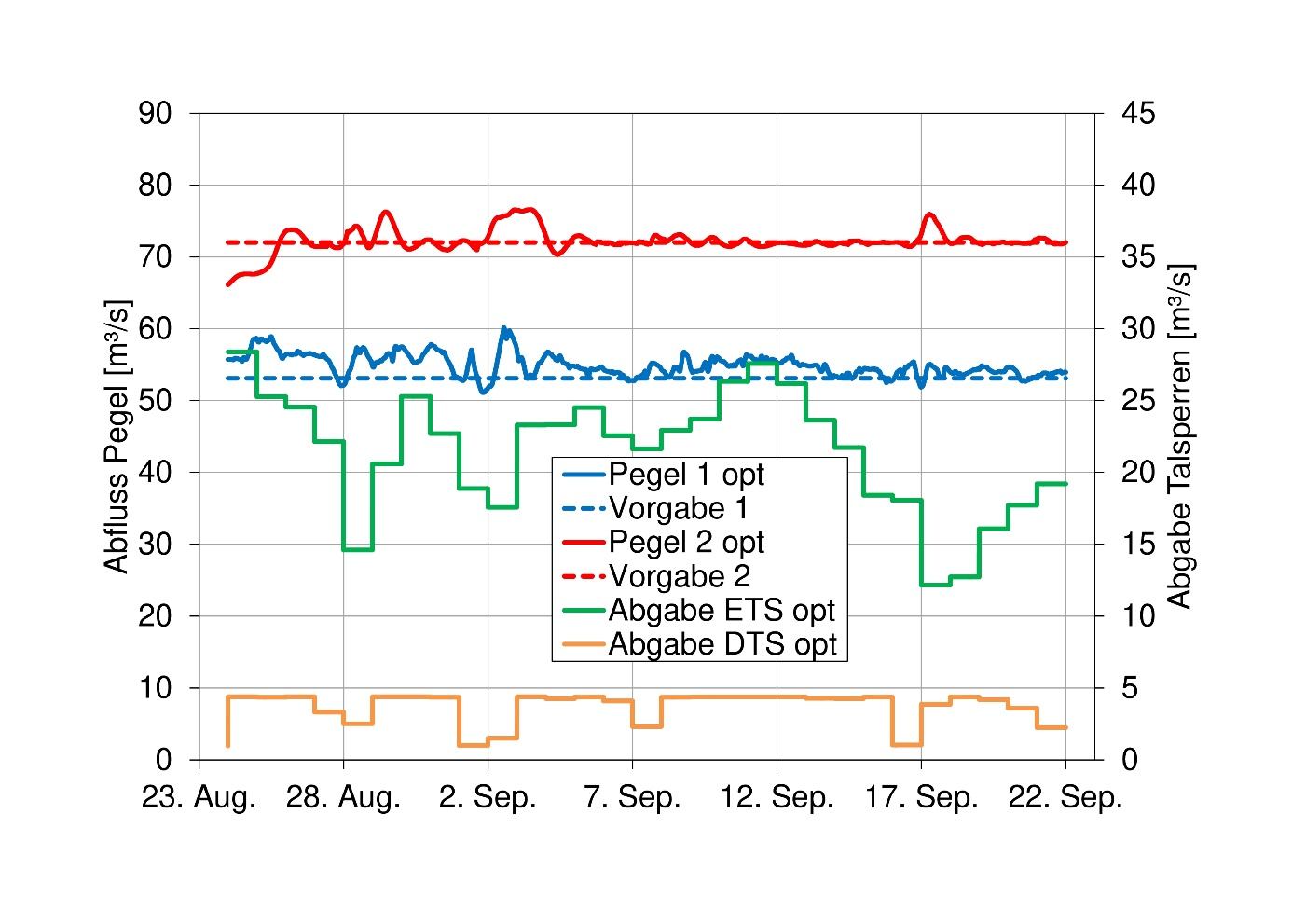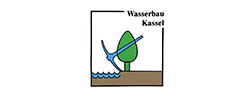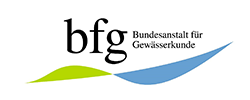Simulation-based optimisation of dam control in various scenarios against the background of limited resources, investigated using the example of the Eder and Diemel dams and the associated flow system.
As part of the WANDEL project, an innovative model for the simulation-based, optimised control of a dam network was developed. The model includes the Eder and Diemel dams as well as the flow system from Eder, Fulda and Oberweser to Petershagen. In order to be able to efficiently release the limited water resources temporarily stored in the dams, it is necessary to optimise the dam control, taking into account the requirements in the system. Various scenarios are defined, such as low water, average water, high water or the increase in low water to improve the shipping conditions on the Weser. These operating scenarios include specifications for discharge procedures or water levels at specific gauges in the system. Innovative model systems, tools and approaches are required to describe the sub-processes of dam management as precisely as possible. Inflow and outflow information as well as the flow behaviour (wave propagation time, retention capacity) within the stretch of water are taken into account and the entire spectrum of flow is reproduced as precisely as possible using hydraulic simulation methods for river modelling. Through targeted dam control, the mentioned operating scenarios can be effectively implemented so that the use of the water supply is optimised. By examining and evaluating control concepts, improvement potential for the efficient management of the available resources is identified.
With the submission of suitable forecast data for the inflow levels of the system, the model can support decision-making in the supraregional management of dams. The Federal Institute for Hydrology (BfG), a project partner, is successfully using the model in this way.



